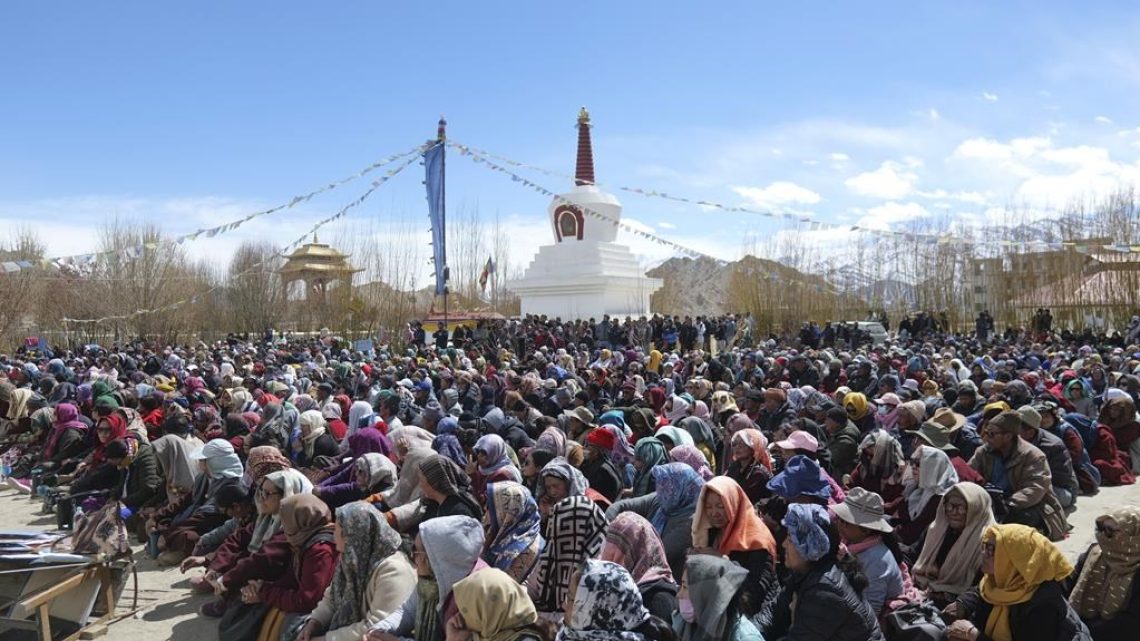
Ladakh Protests for Ecological Survival
March 25, 2024For more than fourteen days, a wave of protests has swept through Ladakh, the remote expanse nestled within the Indian illegally occupied Jammu and Kashmir. Despite bone-chilling temperatures, thousands have taken to the streets, demanding fundamental rights, particularly pertaining to land ownership and the safeguarding of the region’s delicate ecosystem.
Situated amidst India, Pakistan, and China, Ladakh has long been ensnared in territorial disputes and is now grappling with the harsh consequences of climate change. According to reports, the erratic weather patterns in the scarcely populated villages have wreaked havoc, triggering floods, landslides, and droughts.
Among the protesters stands Sonam Wangchuk, a prominent figure in climate activism, enduring freezing conditions in Leh town. Since the onset of the demonstrations on March 6, Wangchuk has embarked on a hunger strike, sustaining himself solely on salt and water, dubbing his protest a “climate fast.”
From the protest grounds in Leh, Wangchuk conveyed to the media the imminent threat posed by uncontrolled industrial expansion and military activities in the region, exacerbating the accelerated melting of glaciers and mountains. He pointed to the local pollution aggravated by militarization, intensified by the ongoing military standoff between India and China since 2020.
Emphasizing the urgent need for ecological conservation in Ladakh, Wangchuk stressed that the consequences extend far beyond the local terrain, impacting over 2 billion people and multiple nations connected to the Greater Himalayas.
Wangchuk drew attention to the plight of Ladakh’s nomadic communities, who are losing their crucial pasturelands to large-scale Indian industrial projects.
In August 2019, Ladakh was unlawfully separated from the Indian-occupied Jammu and Kashmir after New Delhi revoked the region’s special status.
The protests in Ladakh underscore a convergence of grievances, ranging from territorial disputes to environmental concerns and social injustices. The protesters’ demands reflect a deep-seated frustration with the neglect of their region’s interests, both by the Indian government and the international community.
Sonam Wangchuk’s participation and his hunger strike symbolize the urgency of the situation. By sacrificing his well-being for the cause, Wangchuk highlights the severity of the issues faced by Ladakhis, particularly the existential threat posed by climate change and unchecked industrialization.
The militarization of Ladakh further exacerbates the ecological crisis, as Wangchuk aptly points out. The region’s strategic significance has led to its exploitation for military purposes, compounding environmental degradation and endangering the livelihoods of local communities.
Moreover, the protests shed light on the broader implications of the situation in Ladakh. As Wangchuk notes, the fate of the region is intertwined with the well-being of billions of people and multiple countries sharing the Himalayan ecosystem, emphasizing the need for a coordinated international response.
Overall, the protests in Ladakh serve as a poignant reminder of the interconnectedness of environmental, social, and geopolitical issues and the imperative for sustainable and inclusive development policies.

